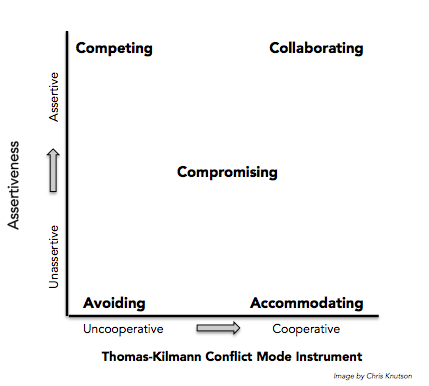“Whenever you’re in conflict with someone, there is one factor that can make the difference between damaging your relationship and deepening it. That factor is attitude.”
William James
Over the course of your professional career you’re going to experience conflict in the workplace. It may be a heated argument over a project, a business strategy gone wrong, or the result of unstated issues between project team members.
In part 1 of this series, published on 28 October, we discussed how to listen up to resolve conflict, keep your cool, and save the day. In this final chapter, we’ll discuss the ultimate question:
To Confront or Not To Confront, That Is The Question
“The most important thing in communication is hearing what isn’t being said. The art of reading between the lines is a lifelong quest of the wise.”
Shannon L. Alder
We are faced with two alternatives when conflict arises: avoid it or confront it. Which path you take is affected by several factors. While many sources will tell you that you never avoid conflict, I will tell you that there are times when you do avoid conflict. This is a play on the old adage of “lose the battle but win the war.”
Circumstances where avoiding conflict may be necessary include:
- When a professional disagreement begins to devolve into personal attacks
- When the possibility of the argument shifting to physical attack becomes likely
- When you realize that your position may not supported by fact
- When the issue is truly of low significance and won’t negatively impact the project
- If winning the argument may damage the long term relationship
If you sense that you may torpedo a relationship simply because you have to be right, reconsider the long-term consequences. Is it worth damaging a professional relationship with colleagues in order to establish your position as correct? If the matter isn’t illegal, unethical, or immoral; consider letting it go for the moment and instead work for an opening to reconsider the issue once the mood has cooled.
Another method for resolving conflict if you do enter into it, is adapted from the Thomas-Kilmann Conflict Mode Instrument, which was developed in the early 1970’s. This method depicts the ways a conflict can be resolved in two-dimensions and can be used to gauge your behavior in resolving a conflict.

The five conflict resolutions strategies are:
- Avoiding: is unassertive and uncooperative and happens when people withdraw from the situation resulting in a “You lose, I lose” result. It might be appropriate for less important issues or when the potential conflict will damage a relationship or overall objective.
- Accommodating: is unassertive but cooperative leading to a “You win, I lose” outcome. This is a suitable tactic when one party is wrong or the issue is more important to the others than yourself.
- Competing: is assertive and uncooperative leading to a “You lose, I win” result. It’s applicable in situations where a quick decision is needed or stronger influence is held by one side.
- Collaborating: is assertive but cooperative with a “You win, I win” outcome. It’s a tactic to be considered when both views are important and a synchronized solution is needed.
- Compromising: is in the center because it’s equal part assertive and cooperative and shows up when an individual is willing to partially give in to reach a middle position such that a “Neither win nor lose” result occurs. This is a useful strategy when both sides have equal power and the goals are not worth the effort or damage that might result a mutually exclusive position.
Which strategy you employ differs for every situation and for each person. The effectiveness relies heavily on your ability to listen to the other parties and on being willing to take the first step towards the correct response to resolve the conflict.
It’s your job as a leader, regardless at what level, to move a conflict towards a positive outcome. Conflict can destroy relationships and reduce overall effectiveness in achieving goals and objectives, both in professional and personal endeavors. So before your next conflict, consider how best you will resolve the situation in such a way that you preserve relationships and move all parties towards their desired objectives.

Excellent post! I enjoyed you detailing out when the different strategies are most effective in leadership! A great post for all leaders to read. Sharing with my community. Thank you!
Many thanks!